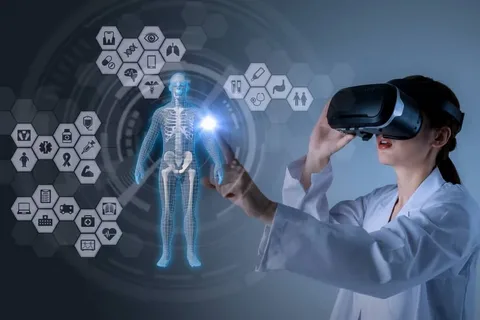Effective communication is a cornerstone of quality healthcare. Whether it’s answering patient queries, providing updates, or scheduling appointments, clear and timely interaction fosters trust and enhances the patient experience. However, managing communication efficiently can be challenging in a busy healthcare environment.
This is where the Virtual Medical Assistant emerges as a transformative tool, streamlining communication between patients and providers. In this article, we will explore the role of Virtual Medical Assistants in improving patient communication, their benefits, challenges, and how they are shaping the future of healthcare interactions.

The Importance of Effective Patient Communication
Good communication in healthcare is vital for several reasons:
- It ensures patients understand their medical conditions and treatment plans.
- It builds trust and strengthens the patient-provider relationship.
- It reduces errors caused by miscommunication.
- It improves patient satisfaction and engagement, leading to better health outcomes.
Yet, healthcare providers often face barriers such as time constraints, high patient volumes, and administrative burdens, making it difficult to maintain consistent communication. Virtual Medical Assistants address these challenges by automating and enhancing the communication process.
How Virtual Medical Assistants Enhance Patient Communication
1. Real-Time Interaction
Virtual Medical Assistants provide immediate responses to patient inquiries, ensuring their concerns are addressed without delays.
- Answer frequently asked questions about symptoms, medications, or procedures.
- Provide reliable health information sourced from credible databases.
2. Appointment Management
- Help patients book, reschedule, or cancel appointments quickly.
- Send automated reminders, reducing missed visits and improving scheduling efficiency.
3. Follow-Up Care
- Provide updates on lab results or post-procedure instructions.
- Remind patients of upcoming follow-ups or preventive screenings.
4. Language and Accessibility Support
- Offer multilingual capabilities to cater to diverse patient populations.
- Utilize voice recognition and text-to-speech technologies for patients with disabilities.
5. Personalized Communication
Using patient data, Virtual Medical Assistants deliver tailored messages, such as:
- Tips for managing chronic conditions.
- Lifestyle advice based on individual health goals.
Benefits of Virtual Medical Assistants in Patient Communication
1. Improved Patient Satisfaction
Timely and accurate communication reassures patients, building confidence in their care.
2. Enhanced Efficiency
By automating routine interactions, Virtual Medical Assistants free up healthcare staff to focus on more complex cases.
3. 24/7 Availability
Patients can access assistance at any time, even outside clinic hours, improving accessibility and convenience.
4. Reduced Workload for Providers
Handling repetitive queries and administrative tasks reduces the burden on healthcare teams, allowing them to allocate more time to patient care.
5. Data-Driven Insights
Virtual Medical Assistants collect data on patient interactions, offering providers valuable insights into patient needs and concerns.
Challenges in Implementing Virtual Medical Assistants for Communication
1. Adoption Barriers
Patients, particularly older adults or those unfamiliar with technology, may hesitate to use virtual tools.
2. Data Privacy Risks
Ensuring secure communication channels is critical to protect patient information and comply with healthcare regulations.
3. Technology Limitations
While Virtual Medical Assistants are highly capable, they may not handle complex or nuanced medical queries effectively.
4. Integration with Existing Systems
Seamlessly integrating Virtual Medical Assistants with EHRs and other healthcare platforms can be challenging.
Real-World Applications of Virtual Medical Assistants in Communication
Use Cases:
- Primary Care: Managing patient inquiries about common illnesses and preventive care.
- Specialty Clinics: Providing detailed pre- and post-procedure instructions.
- Mental Health Services: Supporting therapy schedules and providing mental health resources.
- Pediatrics: Assisting parents with vaccination schedules and growth milestone tracking.
Case Study:
A hospital implemented a Virtual Medical Assistant to manage patient communication, resulting in:
- A 40% reduction in call center volume.
- An 80% patient satisfaction rate with virtual interactions.
The Future of Patient Communication with Virtual Medical Assistants
The role of Virtual Medical Assistants in patient communication is expected to grow, driven by advancements in technology.
Emerging Trends:
- Emotion Recognition: Using AI to analyze tone and sentiment for more empathetic responses.
- Integration with Wearables: Facilitating proactive communication based on real-time health data.
- Voice-Activated Tools: Enhancing usability for patients with limited mobility or digital literacy.
- Global Expansion: Providing communication support in underserved regions through telemedicine platforms.
Conclusion
The Virtual Medical Assistant is revolutionizing patient communication in healthcare, offering timely, efficient, and personalized interactions. By automating routine tasks, these tools empower providers to focus on delivering high-quality care while ensuring patients feel supported and informed.
While challenges such as technology adoption and data security remain, the benefits of Virtual Medical Assistants are undeniable. As healthcare continues to embrace digital transformation, these tools will play a pivotal role in creating a more connected and patient-centered healthcare experience.
